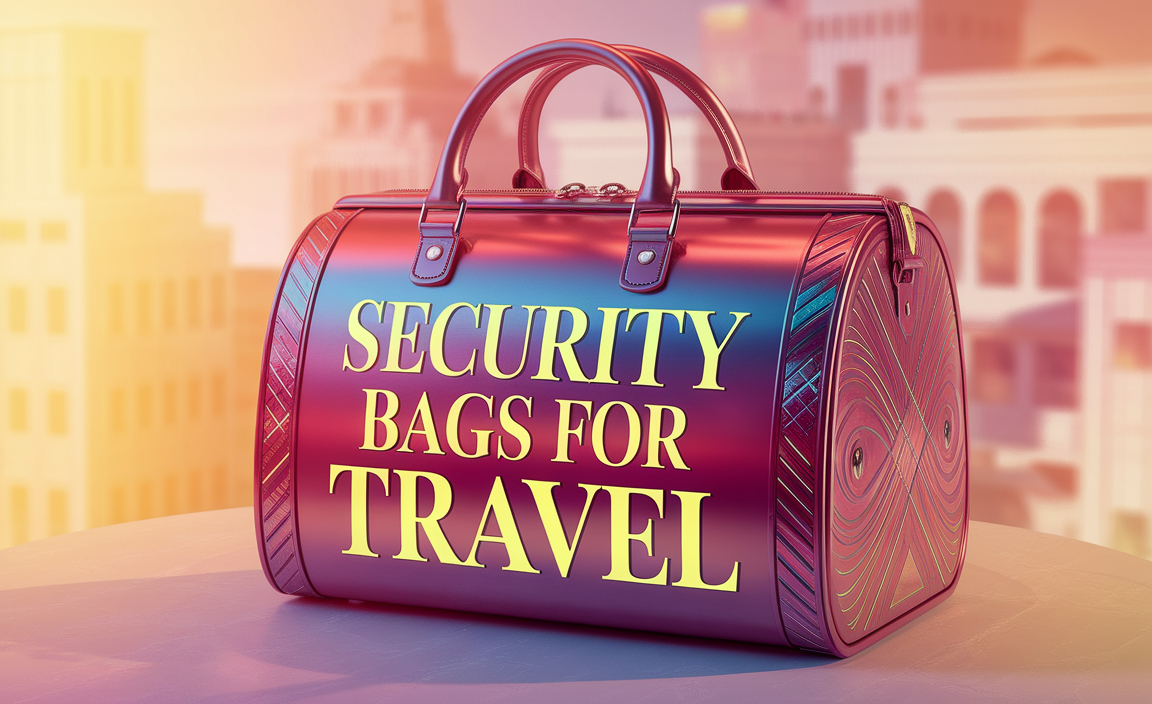Dreaming of Maldives-like beauty without the hefty price tag? Discover how to enjoy stunning turquoise waters, white sand beaches, and incredible snorkeling on a budget. This guide reveals the best affordable Caribbean islands that capture the essence of the Maldives, offering essential tips for a truly memorable and less expensive island escape. Let’s plan your paradise!
Have you ever scrolled through breathtaking photos of overwater bungalows and crystal-clear lagoons, only to be met with a price tag that makes your jaw drop? It’s completely understandable! The Maldives are the epitome of tropical paradise, but for many, they remain a distant dream.
The good news is, you don’t need a private jet or an unlimited budget to experience that same magic. You can find stunning islands in the Caribbean that offer incredibly similar vibes – think vibrant coral reefs, powdery beaches, and serene waters – all at a fraction of the cost.
Planning this kind of trip can feel a bit overwhelming. Where do you even start looking for that picture-perfect escape that won’t break the bank? Don’t worry, we’ve got you covered! This guide will lead you through the best budget-friendly Caribbean islands that evoke the Maldives, sharing practical tips and essential advice so you can plan your dream vacation with confidence and comfort. Get ready to discover your own slice of paradise!
Understanding the “Maldives of the Caribbean” Concept
When we talk about the “Maldives of the Caribbean,” we’re not saying these islands are identical. Instead, we’re looking for destinations that share key characteristics that make the Maldives so special: stunning natural beauty, crystal-clear turquoise waters, vibrant marine life often found in shallow, calm lagoons, picturesque white-sand beaches, and a general sense of tranquility and seclusion.
These Caribbean gems often feature:
- Shallow, calm, turquoise lagoons: Perfect for wading, swimming, and snorkeling without strong currents.
- Abundant coral reefs: Offering incredible snorkeling and diving opportunities right off the shore or with short boat trips.
- Pristine white-sand beaches: Soft and perfect for relaxing under the sun.
- A relaxed, upscale-feeling atmosphere: Even on a budget, you can find places that feel exclusive and serene.
- Opportunities for overwater experiences: While not as common as in the Maldives, some places offer unique stilted bungalows or lodges.
The key is to find destinations that deliver on these visual and experiential elements, allowing you to capture that idyllic island feel without requiring a massive financial investment. This is all about smart travel and knowing where to look!
Top Budget-Friendly Caribbean Islands with a Maldives Vibe
Finding affordable islands that capture the essence of the Maldives requires looking beyond the most famous, high-end resorts. We’re focusing on places that offer natural beauty, excellent snorkeling, and a more laid-back, budget-conscious approach. Here are some of our top picks:
1. The Grenadines (St. Vincent and the Grenadines)
While some islands in this chain cater to the ultra-luxury market, others offer incredible value and natural beauty reminiscent of the Maldives. Think of islands like Bequia, Canouan (which has more affordable guesthouses away from the main resort), or Union Island.
- Why it’s like the Maldives: Expect incredibly clear turquoise waters, stunning coral reefs, and beautiful, often less crowded, white-sand beaches. The Tobago Cays, a marine park within the Grenadines, are famous for their clear waters, sea turtles, and vibrant fish.
- Budget Tip: Stay in guesthouses or small, locally-owned hotels. Utilize local transportation (water taxis, ferries) between islands. Pack your own snorkel gear to save on rental costs.
- Essential Experience: Snorkeling or diving in the Tobago Cays. You can take day trips from Union Island or Bequia.
For more information on the Tobago Cays Marine Park, visit the St. Vincent and the Grenadines Tourism Authority website.
2. Bonaire
Known as a diver’s paradise, Bonaire’s commitment to marine conservation means spectacular underwater scenery is accessible to everyone. While it might not have the overwater bungalows of the Maldives, its calm, protected waters and vibrant coral gardens are astonishingly similar.
- Why it’s like the Maldives: Bonaire is renowned for its shore diving and snorkeling. The waters are incredibly clear, teeming with marine life, and the colorful underwater world rivals anything you’d find elsewhere. The island also boasts salt flats and flamingo sanctuaries, adding unique natural charm.
- Budget Tip: Bonaire is excellent for self-catering. Rent a car and explore the many accessible shore dive/snorkel sites. Look for apartments or smaller, locally run hotels. Many operators offer dive packages that can save money.
- Essential Experience: Shore snorkeling or diving at sites like 1000 Steps or Sorobon Beach. The windsurfing and kitesurfing scene at Lac Bay is also world-class and beautiful to watch.
Learn more about Bonaire’s marine parks and regulations at the Bonaire Marine Park.
3. The Exumas, Bahamas
While the Bahamas can be pricey, certain areas, particularly in the Exumas, offer that quintessential turquoise water and star-fish-dotted sandbar experience that draws people to the Maldives. The Exumas are a chain of 365 islands, offering numerous opportunities for exploration and secluded spots.
- Why it’s like the Maldives: The Exumas are arguably the most visually similar to the Maldives in terms of water color. The shallow sandbanks, incredibly clear water, and stretches of pristine white sand are breathtaking. Famous for swimming pigs and nurse sharks, the marine life encounters are spectacular.
- Budget Tip: Stay on Great Exuma or Little Exuma where there are more affordable guesthouses and rental properties outside of the big resorts. Pack snacks and drinks for day trips, as island vendors can be expensive. Look for boat tours that offer group rates.
- Essential Experience: Visit the famous swimming pigs, explore the sandbars, and snorkel in the vibrant reefs around these stunning cays.
4. Cozumel, Mexico
Often overshadowed by Cancun and Playa del Carmen, Cozumel offers a more relaxed vibe and incredible access to the Mesoamerican Barrier Reef. While it’s a cruise ship port, staying on the island and exploring beyond the main town can reveal its budget-friendly charm.
- Why it’s like the Maldives: Cozumel boasts crystal-clear Caribbean waters and some of the most vibrant coral reefs in the region. The underwater visibility is exceptional, making for fantastic snorkeling and diving. You can find beautiful, less crowded beaches along the western coast.
- Budget Tip: Rent a scooter or small car to explore the island independently. Eat at local loncherias and taquerias away from the tourist strip. Look for all-inclusive resorts on the southern part of the island, which can offer good value if you plan to stay put, or opt for smaller hotels in San Miguel.
- Essential Experience: Snorkeling or diving at Palancar Reef or Columbia Shallows. Take a day trip to Isla Pasion for beautiful beaches.
For responsible diving and snorkeling information, check out the Cozumel Tourist Board’s guidelines.
5. Utila, Honduras (Bay Islands)
If whale sharks, budget diving, and a backpacker-friendly atmosphere appeal to you, Utila is a fantastic choice. While it’s more rustic than the Maldives, its underwater world and the chance to swim with whale sharks are unparalleled for the price.
- Why it’s like the Maldives: The waters are warm and clear, and while the reefs might not be as pristine as some other Caribbean islands, the sheer abundance of marine life – especially the chance to see whale sharks – is incredible. The vibe is very laid-back, focusing on the ocean.
- Budget Tip: Utila is famously one of the cheapest places in the world to get scuba diving certified. Accommodation consists mostly of hostels and budget guesthouses. Eat at local eateries for very affordable meals.
- Essential Experience: Getting scuba certified or going on a dive trip to swim with whale sharks (seasonal).
Planning Your Affordable Maldives-Inspired Caribbean Trip: Essential Steps
Now that you have some destination ideas, let’s talk about how to make this dream a reality without overspending. It’s all about smart planning and focusing on what truly matters: the stunning natural beauty and the relaxation.
Step 1: Set Your Budget (Realistically!)
Before anything else, determine how much you can comfortably spend. This includes flights, accommodation, food, activities, and any buffer for unexpected expenses. Being clear about your budget will guide every other decision you make.
- Flights: This is often the biggest expense.
- Accommodation: Guesthouses, Airbnb, or smaller hotels are usually cheaper than large resorts.
- Food: Eating local can save a lot.
- Activities: Prioritize what you want to do most.
- Miscellaneous: Transportation, souvenirs, tips, insurance.
Step 2: Choose Your Destination Wisely
Consider the factors we discussed: water clarity, marine life, beach quality, and overall vibe. Also, think about travel time and ease of access. Some islands are more remote and might require multiple connections or expensive small plane flights.
Destination Comparison Table
| Island/Region | Maldives Vibe Aspect | Budget Factor | Best For |
|---|---|---|---|
| The Grenadines | Crystal turquoise waters, Tobago Cays marine park | Guesthouses, local transport are affordable | Snorkeling, pristine beaches |
| Bonaire | Abundant marine life, clear calm waters, accessible reefs | Shore diving/snorkeling saves money, self-catering friendly | Diving, snorkeling, shore exploration |
| The Exumas, Bahamas | Iconic turquoise water, sandbars, sand dollars | Stay on larger islands, group tours | Visual beauty, unique wildlife encounters |
| Cozumel, Mexico | Vibrant reefs, clear Caribbean waters | Independent exploration, local food | Diving, snorkeling, relaxed vibe |
| Utila, Honduras | Whale shark encounters, budget diving | Extremely affordable destination, accommodation | Diving, wildlife encounters, backpacker budget |
Step 3: Travel During the Shoulder Season
Avoid peak tourist seasons (typically winter holidays and spring break). Traveling during the shoulder seasons (late spring, fall) can save you significant money on flights and accommodation. You’ll also encounter fewer crowds, leading to a more relaxed experience.
For example, in many Caribbean destinations, the hurricane season runs from June to November. While this means a higher chance of rain or storms, prices are significantly lower. Traveling in May or early December can offer a great balance of decent weather and lower prices.
Step 4: Book Flights in Advance and Be Flexible
Flights are a major expense. Start looking for flights several months in advance. Use flight comparison websites like Google Flights, Skyscanner, or Kayak. Consider flying on weekdays, which are often cheaper than weekends. If your dates are flexible, experiment with different departure and return days to find the best deals.
Step 5: Choose Accommodation Smartly
Look beyond large, all-inclusive resorts. Consider:
- Guesthouses and Small Hotels: Often family-run and more affordable, offering a more authentic experience.
- Vacation Rentals (Airbnb, VRBO): Great for families or longer stays, offering kitchens to save on food costs.
- Hostels: If you’re a solo traveler or don’t mind shared dorms, hostels are the cheapest option.
For destinations like Bonaire or parts of the Exumas, self-catering accommodations can lead to significant savings on meals.
Step 6: Pack Smart Essentials
Being prepared can prevent costly on-the-spot purchases. For a Maldives-like experience on a budget, consider packing:
- Your own snorkel gear: If yours is compact, it can save rental fees.
- Reusable water bottle: Stay hydrated and reduce plastic waste.
- Sun protection: High SPF sunscreen, hats, rash guards.
- Basic first-aid kit: For minor scrapes or ailments.
- Waterproof phone case: Protect your tech near the water.
- Insect repellent: Especially for evenings.
- Lightweight, quick-drying clothing.
For adults or parents managing personal care needs, packing sufficient quantities of items like adult diapers or child diapers is crucial. This ensures comfort and reduces stress, allowing you to focus on enjoying the destination. Discreetly packing these essentials in travel-friendly packaging can make a big difference to your peace of mind on long travel days or while exploring remote beaches.
Step 7: Enjoy Local Food and Activities
Resist the urge to eat only at tourist-oriented restaurants. Seek out local eateries, food stalls, and markets for authentic and delicious meals at much lower prices. For activities, focus on the natural wonders – swimming, snorkeling, exploring beaches, watching sunsets – which are often free or low-cost.
For example, on Cozumel, instead of a high-priced beach club, consider renting a scooter to find a less crowded public beach and pack a picnic lunch.
Essential Considerations for a Stress-Free Trip
Beyond the budget, comfort and safety are paramount for any traveler, especially when exploring new destinations. Journey Essentials is all about making your travel experience as smooth as possible.
1. Embrace the Local Pace
Islands, especially those with a more relaxed atmosphere, operate on “island time.” Embrace it! Don’t rush. Allow extra time for transportation, service, and simply enjoying the moment. This mindset shift can significantly reduce travel stress.
2. Stay Connected (Safely)
While you might want to unplug, having some level of connectivity is helpful for navigation, communication, and emergencies. Consider purchasing a local SIM card upon arrival or checking international data plans with your provider. Many hotels and cafes offer Wi-Fi, but it’s not always reliable or fast.
3. Prioritize Safety and Security
Research common safety precautions for your chosen destination. Be aware of your surroundings, secure your valuables, and avoid walking alone in unfamiliar areas at night. Most importantly, travel insurance is non-negotiable. It provides a safety net for medical emergencies, trip cancellations, and lost luggage.
Organizations like the U.S. Department of State offer country-specific travel advisories and safety information, which are invaluable resources.
4. Manage Personal Comfort Needs
For travelers who require adult diapers or are traveling with children needing child diapers, planning ahead is key. Confident travel means being prepared. Ensure you have an adequate supply for your trip, plus a little extra. Modern adult diapers and child diapers are designed for absorbency and discreetness, ensuring comfort during flights, excursions, and overnight stays. Packing them in sealed bags within your luggage offers peace of mind and ensures these essential items are readily available without needing immediate searches upon arrival.
5. Hydration and Sun Protection are Crucial
Tropical climates demand attention to hydration and sun safety. Drink plenty of water – more than you think you need. Use reef-safe sunscreen to protect both your skin and the delicate marine ecosystems. Wear wide-brimmed hats and seek shade during the hottest parts of the day.
Conclusion
The dream of a turquoise paradise, reminiscent of the Maldives, is absolutely achievable without emptying your bank account. By focusing on destinations like the Grenadines, Bonaire, the Exumas, Cozumel, or Utila, and by employing smart travel strategies – booking in advance, traveling during the shoulder season, choosing budget-friendly accommodation, and embracing local experiences – you can craft an unforgettable island getaway.
Remember, the true essence of a tropical escape lies in the natural beauty, the serene waters, and the feeling of relaxation. These “Maldives of the Caribbean” offer precisely that, allowing you to create memories that will last a lifetime. So, go ahead and start planning. Your affordable slice of paradise awaits!
Frequently Asked Questions
Q1: Are there islands in the Caribbean that actually look like the Maldives?
A1: While no Caribbean island will be an exact replica, many offer very similar visual aesthetics and experiences, including incredibly clear turquoise waters, white-sand beaches, and abundant marine life. Places like the Grenadines, Exumas, and Bonaire come close in terms of natural beauty and feel.
Q2: How can I find cheap flights to these islands?
A2: Start searching well in advance, be flexible with your travel dates and airports, and use flight comparison websites. Flying mid-week and during the shoulder season often yields the best prices.
Q3: What’s the best time of year to visit these budget-friendly islands?
A3: The best time for good weather and lower prices is generally during the shoulder seasons, typically from April to May and then again from September to November. You can often find the absolute lowest prices during the hurricane season (June-November), but be prepared for the possibility of rain or storms.
Q4: Are all-inclusive resorts the only way to go for a budget trip?
A4: Absolutely not! Smaller guesthouses, vacation rentals, and local hotels are often far more affordable and can offer a more authentic experience. Self-catering can also save you a lot on food.
Q5: What are the must-have essentials for a snorkeler on a budget?
A5: Bring your own snorkel gear if you have it, a waterproof camera or phone case, reef-safe sunscreen, a hat, and a rash guard for sun protection. Staying hydrated is also key!
Q6: Is it safe to travel to these less-famous Caribbean islands?
A6: Generally, yes. As with any travel, it’s important to research your specific destination, be aware of your surroundings, and take standard safety precautions. Purchasing travel insurance is highly recommended for peace of mind.
Q7: How can I save money on food while traveling in these destinations?
A7: Eat where the locals eat! Seek out local markets, street food vendors, and casual eateries away from the main tourist strips. If your accommodation has a kitchen, prepare some of your own meals and snacks.




